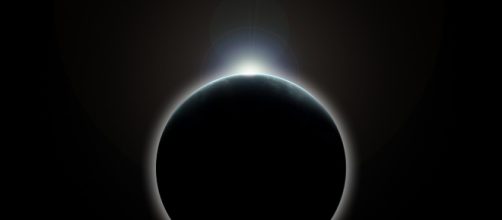The highly anticipated Great American Total Solar Eclipse will occur on August 21. Most people in the U.S. and its path will only see the phenomenon for a few minutes. But NASA-funded scientists will attempt to chase the eclipse using WB-57F jet planes.
The eclipse is expected to last for only 2 and 1/2 minutes. But some scientists may experience it longer.
Chasing the Great American Total Solar Eclipse
To observe the eclipse, the scientists will follow the shadow of the moon using two retrofitted NASA WB-57F jet planes. Amir Caspi of the Southwest Research Institute from Boulder, Colorado and his team will attempt to chase the eclipse using the two modified NASA jets.
Telescopes were attached to the nose of the planes.
This will enable Caspi and his team to capture the most detailed and the potentially clearest image of the Sun's corona during an eclipse. According to NASA, the phenomenon may also give the scientists an opportunity to capture the first-ever thermal image of Mercury that could reveal how its temperature varies in its surface.
Experts from the University of Colorado said that the eclipse could lead to the best observation of high-frequency activities on the sun's corona. The high altitude and the extended observation of the eclipse may also pave the way for the discovery of other activities happening during an eclipse like track waves that aren't visible when viewed from the ground.
Observation of the sun
Many experts are anticipating the Total Solar Eclipse since this is the best opportunity to study the sun's atmosphere. The moon will completely block the sun leaving only the corona visible against the dark sky. NASA funded a total of 11 projects to study the phenomenon. One of the most intriguing targets of the study is why the corona is hotter - to millions of degrees, compared to the photosphere or the visible surface of the sun, which is heated to only a few thousand degrees.
The use of NASA WB-57F jets will enable scientists to observe from angles where no one has ever attempted before. Because no one can come near the center of the Solar System, there is very little information known about nanoflares. The use of the jets is expected to reveal new understanding about the corona and the nanoflares by taking high-speed and high-resolution images.
The instruments aboard the jets will take 30 images per second. The images might potentially explain the heating in the corona. Scientists will also try to investigate the sun's magnetic field including the neat loops and smooth fans found on it.
The jets will launch from the Ellington Field near NASA's Johnson Space Center. They will fly over Missouri, Illinois, and Tennessee in order to observe the eclipse for 3 and 1/2 minutes.


